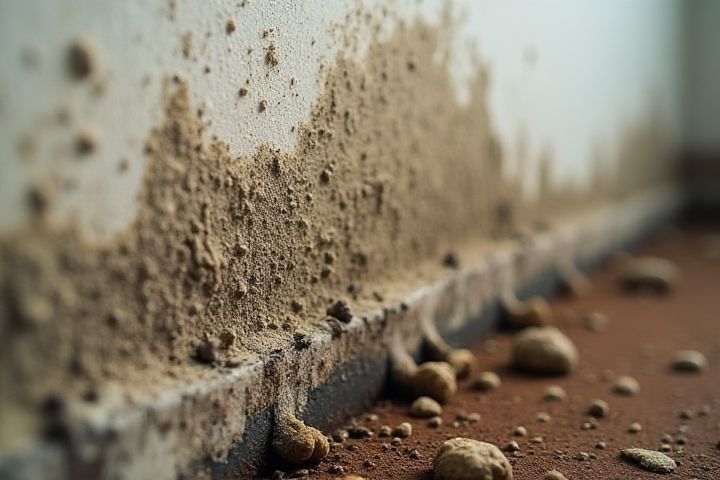
House mold poses significant health risks, primarily due to its ability to release spores and mycotoxins into the air. Exposure can lead to respiratory issues, allergic reactions, and exacerbation of asthma, particularly in sensitive individuals. Certain molds, such as black mold (Stachybotrys chartarum), are known to produce more harmful substances, increasing the likelihood of severe health effects over time. Mold thrives in damp, poorly ventilated areas, making kitchens, bathrooms, and basements particularly vulnerable. To maintain a safe living environment, it is essential to control humidity levels and address water leaks promptly.
Why House Mold Is Dangerous
Health Hazards
House mold poses significant health hazards, as exposure can lead to respiratory problems affecting approximately 20% of the population, particularly those with asthma or allergies. Mold produces allergens, irritants, and mycotoxins, which have been linked to chronic conditions, including sinus infections and allergic reactions. In more severe cases, prolonged exposure can result in neurological symptoms and impaired immune function. Preventing mold growth through humidity control, proper ventilation, and timely repairs can help mitigate these health risks in your home.
Respiratory Issues
House mold is a significant health risk, particularly for individuals with pre-existing respiratory conditions, allergies, or compromised immune systems. Exposure to mold spores can lead to symptoms such as coughing, wheezing, and nasal congestion, affecting around 10% of the population who are particularly sensitive. In more severe cases, prolonged exposure can trigger asthma attacks or lead to the development of respiratory infections, impacting overall lung function. It's essential to address mold issues promptly, as eliminating mold can reduce respiratory complications and improve indoor air quality.
Allergic Reactions
House mold can trigger a range of allergic reactions, affecting approximately 10% to 20% of the population who are sensitive. Common symptoms include sneezing, runny nose, itchy eyes, and skin rashes, which can occur even at low levels of mold exposure. Mold spores can become airborne, leading to increased inhalation risks, especially in damp areas of the home with humidity levels exceeding 50%. Your risk of severe reactions, such as asthma attacks or respiratory issues, heightens significantly if you have pre-existing allergies or respiratory conditions.
Toxic Mold Varieties
House mold can pose serious health risks, particularly toxic varieties like Stachybotrys chartarum, commonly known as black mold. Exposure to these toxic molds may lead to respiratory issues, allergic reactions, and in some cases, neurological problems. If you notice mold growth in your home, it's crucial to address it promptly; inhaling mold spores can exacerbate existing health conditions, especially for those with asthma or weakened immune systems. Regular inspections and maintaining humidity levels below 50% can help prevent mold infestations, ensuring a healthier living environment for you and your family.
Structural Damage
House mold can lead to significant structural damage, compromising the integrity of your home. Mold thrives in damp environments, often settling in hidden spaces such as walls, ceilings, and basements, where it can weaken materials like wood and drywall over time. Studies estimate that mold-related issues can result in repair costs exceeding $30,000 if left unchecked, making early detection crucial. You may not realize that mold can erode beams and supports, potentially making your house unsafe for occupancy.
Hidden Growth
Hidden mold growth can pose significant health risks, as it often goes unnoticed in damp, dark areas like behind walls or under carpeting. According to the Environmental Protection Agency (EPA), mold can exacerbate allergies and asthma, affecting approximately 20% of the population. Mold produces spores and mycotoxins, which can trigger respiratory issues, skin irritation, and other health problems. Regular inspections and maintaining indoor humidity levels below 60% can help mitigate hidden mold growth in your home.
Spores Spread Easily
House mold poses significant health risks due to its ability to produce spores that spread easily through the air. These microscopic spores can infiltrate your living space, triggering respiratory ailments, allergies, and asthma attacks in sensitive individuals. When mold spores are inhaled or come into contact with skin, they can lead to various health complications, reinforcing the importance of maintaining a dry, well-ventilated environment. If you discover mold in your home, prompt action is crucial to minimize health risks and prevent further spread.
Affects Indoor Air Quality
House mold significantly deteriorates indoor air quality, as it releases spores and mycotoxins into the environment. Levels of volatile organic compounds (VOCs) produced by mold can reach concentrations 10 times higher indoors, leading to respiratory issues and allergic reactions. Studies indicate that 50% of homes in the U.S. have some form of mold, often undetected by occupants. Minimizing moisture and maintaining humidity levels below 60% can help reduce mold growth, protecting your health and improving air quality.
Costly to Remove
House mold poses significant health risks and is often costly to remove, with remediation expenses ranging from $500 to $6,000 depending on severity. Beyond financial burden, delays in addressing mold can exacerbate structural damage, leading to costly repairs that could exceed $30,000 if left untreated. Homeowners also face potential drops in property value, with homes affected by extensive mold frequently selling for 10-25% less. You risk not only your health but your financial stability if mold infestations are ignored, making early intervention crucial.
Can Trigger Asthma
House mold can significantly affect respiratory health, particularly in individuals with asthma. Exposure to mold spores can lead to increased asthma symptoms, including wheezing and shortness of breath, especially in sensitive individuals. According to the CDC, around 24 million Americans are affected by asthma, and mold can exacerbate these conditions, potentially leading to severe asthma attacks. Ensuring proper ventilation and moisture control in your home can help mitigate mold growth and protect your respiratory health.
